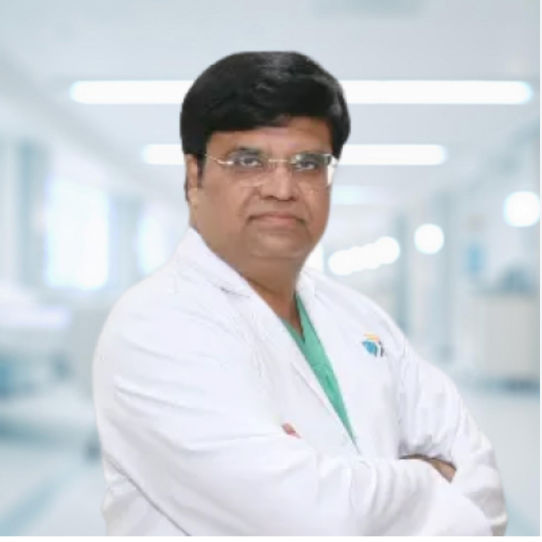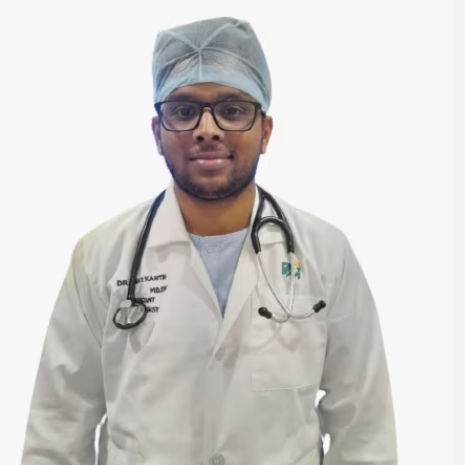Comprehensive Guide to Varicose Veins Treatment and Solutions
Varicose vein is a common disorder in the valves of one’s veins that can be treated with proper medical interventions. Here’s more on its causes, risks, and treatment.

Written by
Last updated on 3rd Jul, 2025
Varicose veins develop due to the malfunctioning of valves in the veins, leading to vein enlargement. It is a common vein condition featuring swollen and twisted veins on the legs that turn blue or dark purple. It is caused by multiple factors, including age, hormonal changes, standing for long hours, and others.
Individuals diagnosed with varicose veins must know about the treatment options to stay protected from complications. Keep reading to learn about the symptoms, diagnosis methods, and treatment of varicose veins.
Symptoms and Diagnosis of Varicose Veins
Here are the symptoms of varicose veins:
Itching: One may experience itching around the body parts where varicose veins have developed.
Heavy Legs: The muscles in one's feet may feel tired and heavy after exercise or other physical activity.
Bulging Veins: These are swollen, twisted, rope-like veins under the skin surface of one's legs, feet, or ankle that can form clusters. These veins are blue or purple with spider veins (tiny blue or red vein lines) nearby.
Swelling: One with viscose veins may experience swelling or throbbing of ankles, feet, and legs.
Pain: One can experience muscle cramps, soreness, or aches in their legs, especially in the knee areas, if they have viscose veins.
Skin Discolouration: One may experience skin discolouration and venous ulcers due to varicose veins.
If one experiences these symptoms, they can consult a doctor for diagnosis.
The following are the diagnostic methods for varicose veins:
Physical Examination: The healthcare provider checks one’s legs to see if they have swelling and asks to describe the ache or pain. The examination requires a standing position while the doctor assesses the legs.
Imaging Tests: Healthcare professionals may also ask for a venous Doppler ultrasound besides a physical test. It provides a detailed image of blood flow through the valves in one's veins. This painless leg ultrasound helps detect blood clots in the veins.
Consult Top Doctors for Your Symptoms
Conservative Treatment Options for Varicose Veins
Varicose veins can be treated in the following ways:
Self-care: Varicose veins often cause pain if an individual stays standing for long. Self-care measures such as regular exercise, raising legs while lying or sitting down, etc., help relieve the pain of varicose veins.
Compression Stockings: One of the first approaches to keep varicose veins in control is wearing compression stockings. As these stockings squeeze one's legs, circulation of blood in the veins and leg muscles improves.
Medical Treatments for Varicose Veins
Here are some of the medical treatments to cure varicose veins:
Sclerotherapy: In this method, a solution is injected into one's varicose veins, which causes the walls of the veins to stick together. Thus, the varicose veins are scarred and then removed.
Laser Treatments: This treatment uses bursts of intense light directed at the varicose vein, gradually causing it to fade. It is a non-invasive procedure that requires no cuts or needles.
Surgical Interventions for Varicose Veins
Varicose veins can be treated using the following surgical procedures:
Vein Ligation and Stripping: In this process, the point where a varicose vein joins a deep vein is tied off and then removed through tiny cuts. Vein removal does not stop the blood flow in one's leg, as deeper veins can carry the blood in larger amounts.
Ambulatory Phlebectomy: In this process, doctors remove smaller varicose veins by pricking the skin. Tiny pricks are made on the part of the leg that needs varicose vein removal.
Minimally Invasive Procedures to Treat Varicose Veins
Other than surgery, healthcare professionals may use minimally invasive techniques like the following to treat varicose veins:
Endovenous Ablation Therapy: This minimally invasive ablation procedure uses high-frequency radio waves or lasers to seal varicose veins. Once sealed, blood flow is redirected through healthy veins, restoring normal circulation.
Radiofrequency Ablation: It is almost similar to the previous one. The only difference is that doctors use the heat from radiofrequency energy to contract the collagen in one's vein walls. This causes the veins to collapse, allowing the blood to flow to the healthy veins.
Post-Treatment Care for Varicose Veins
Individuals who have undergone treatment for varicose veins should follow these tips for post-treatment care:
Post-surgery, individuals may have a wound in their groin. It is crucial to remove the dressing the day after the surgery. However, the reinforced skin adhesives should remain intact, and if they come out, one must reinforce them until the wound is not healed completely.
Patients should take analgesia as prescribed by the doctor. However, in case of allergies, one must consult the healthcare provider.
One must wear the stockings throughout the day after surgery, at least for three weeks. It can only be removed while sleeping and showering.
After getting discharged from the hospital, the patient must walk for 20 minutes twice daily. However, one should avoid over-exercising.
One must contact their healthcare provider for a follow-up or upon feeling any discomfort.
Risk Factors and Complications of Varicose Veins
Here are some of the factors that increase the risks of developing varicose veins in an individual:
Age: As the veins and valves lose their elasticity with age, older people are more prone to the risks of varicose veins.
Family History: One can inherit varicose veins if anyone in the family has a history of this condition.
Weight: Too much body weight exerts pressure on the blood vessels. Thus, individuals with excessive weight are prone to the risks of varicose veins.
Hormone: Pregnant women, those in menopause, or those taking birth control pills experience high levels of hormonal changes. These hormones can stretch the walls of one's veins, causing varicose veins.
Lifestyle: Certain lifestyles, like sitting or standing for long hours or consuming tobacco, increase the risks of varicose veins.
One should also be aware of the complications of varicose veins to prevent the situation from worsening. Here are some of them:
Itchy rash (dermatitis)
Bleeding
Skin ulcers
Superficial thrombophlebitis (blood clot in veins), etc.
Lifestyle and Dietary Recommendations for Varicose Veins
Here are some of the lifestyle and dietary recommendations one can follow to keep a check on varicose veins:
Weight Management: Individuals need to maintain a moderate weight to avoid extra pressure on the veins.
Regular Exercise: Physical activities like regular walking or workout sessions suggested by the healthcare provider can help keep varicose veins under control.
Dietary Changes: Limiting salt intake can prevent the swelling of one’s body, minimising the risks of varicose veins. Smoking also increases the risks of varicose veins by damaging the blood vessels. Thus, one must avoid taking tobacco and smoking to control varicose veins.
Raising Legs: One can raise their legs above the heart level daily to improve blood flow.
Avoiding Standing for Long: Standing or sitting in the same position for a long time can increase the risks of varicose veins. One should keep changing their sitting positions and avoid standing for a long time.
Conclusion
Varicose veins can be managed through various treatment options ranging from lifestyle changes and compression therapy to medical procedures such as sclerotherapy and surgical interventions. Early diagnosis and treatment of varicose veins can significantly reduce symptoms and prevent complications.
Individuals experiencing signs of varicose veins should consult healthcare professionals for appropriate evaluation and management strategies.
Consult Top Cardiologists
Consult Top Doctors for Your Symptoms

Dr. Sunil Modi
Cardiologist
38 Years • MBBS,MD (Med.),DM (Cardio)
Delhi
Apollo Hospitals Indraprastha, Delhi
(25+ Patients)

Dr. Subir Ghosh
Cardiologist
16 Years • MBBS; MD(MED); DM(Cardio)
Ahmedabad
Apollo Hospitals Gandhinagar, Ahmedabad

Dr. Chakradhar Pedada
Cardiologist
5 Years • MBBS,MD,DM
Visakhapatnam
Apollo Hospitals Ramnagar Vizag, Visakhapatnam
(25+ Patients)

Prof. Dr. Vivek Gupta
Cardiologist
25 Years • MD, DM, FESC, FEAPCI, FAPSIC,FCSI, FICC, FIC France, FIEIC, FSCAI
Delhi
Apollo Hospitals Indraprastha, Delhi

Dr Ravi Kanth T
Cardiologist
7 Years • MD, DM, PDF
Visakhapatnam
Apollo Hospitals Ramnagar Vizag, Visakhapatnam
Consult Top Cardiologists

Dr. Sunil Modi
Cardiologist
38 Years • MBBS,MD (Med.),DM (Cardio)
Delhi
Apollo Hospitals Indraprastha, Delhi
(25+ Patients)

Dr. Subir Ghosh
Cardiologist
16 Years • MBBS; MD(MED); DM(Cardio)
Ahmedabad
Apollo Hospitals Gandhinagar, Ahmedabad

Dr. Chakradhar Pedada
Cardiologist
5 Years • MBBS,MD,DM
Visakhapatnam
Apollo Hospitals Ramnagar Vizag, Visakhapatnam
(25+ Patients)

Prof. Dr. Vivek Gupta
Cardiologist
25 Years • MD, DM, FESC, FEAPCI, FAPSIC,FCSI, FICC, FIC France, FIEIC, FSCAI
Delhi
Apollo Hospitals Indraprastha, Delhi

Dr Ravi Kanth T
Cardiologist
7 Years • MD, DM, PDF
Visakhapatnam
Apollo Hospitals Ramnagar Vizag, Visakhapatnam
